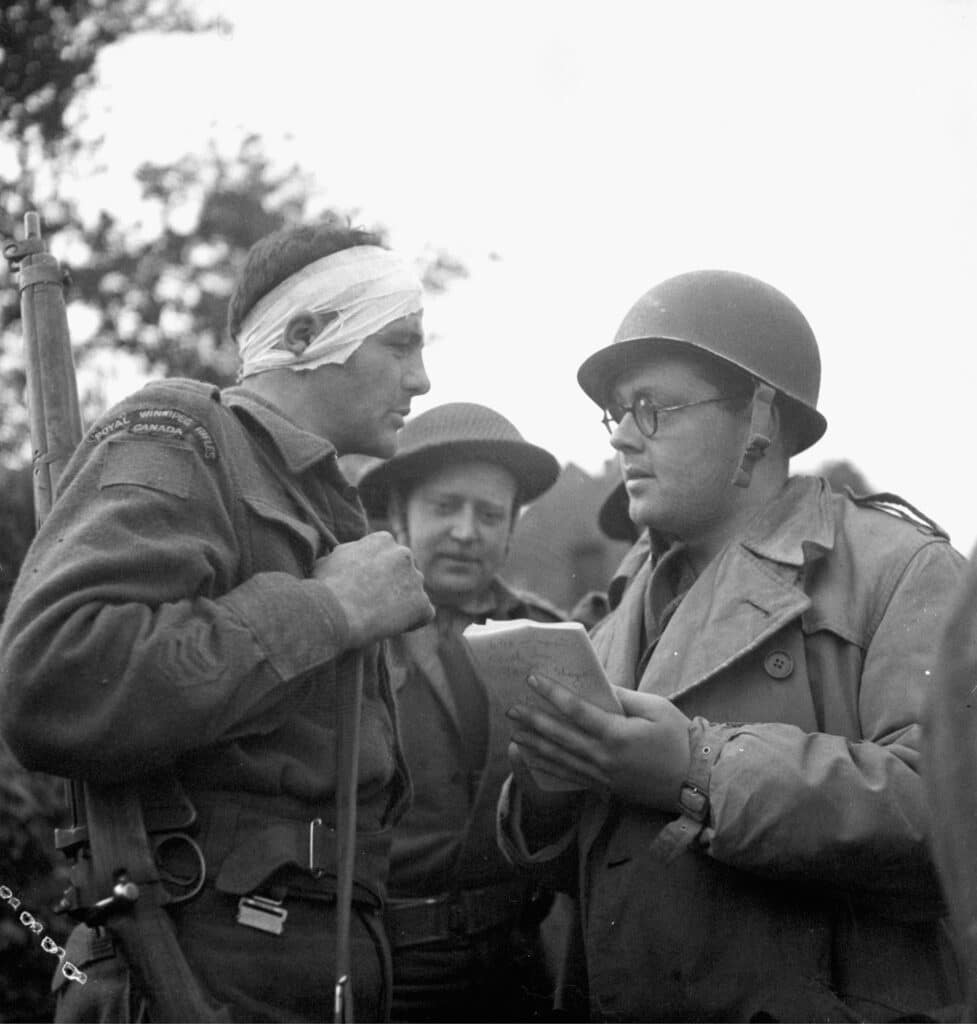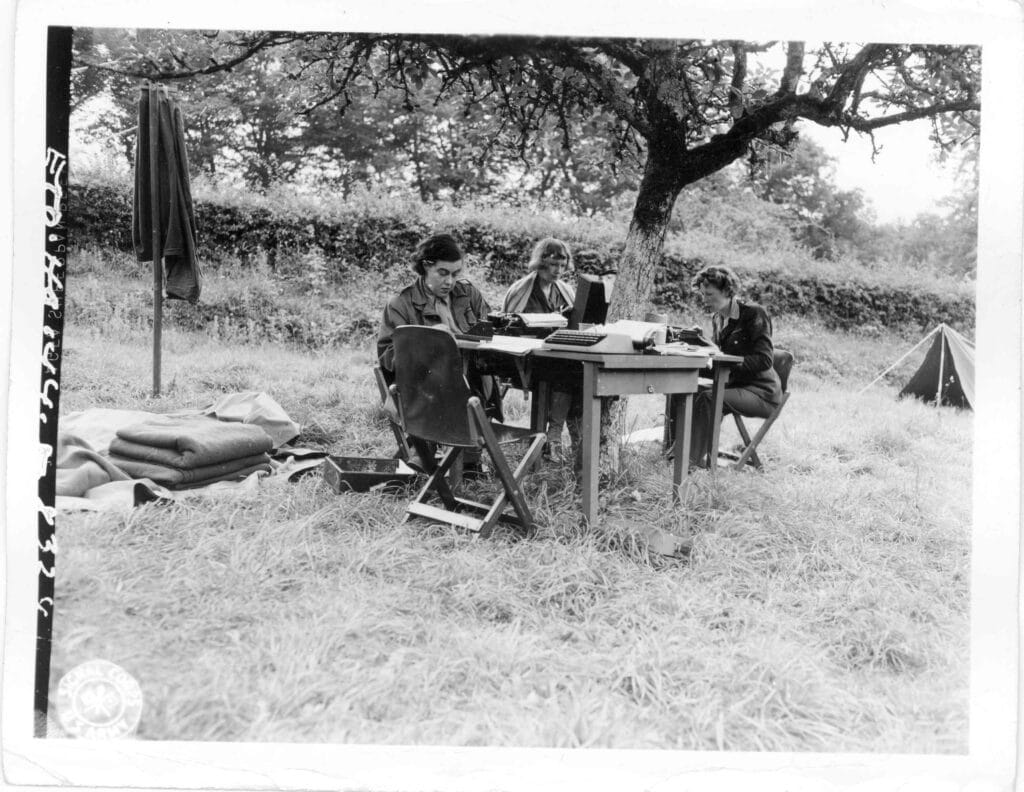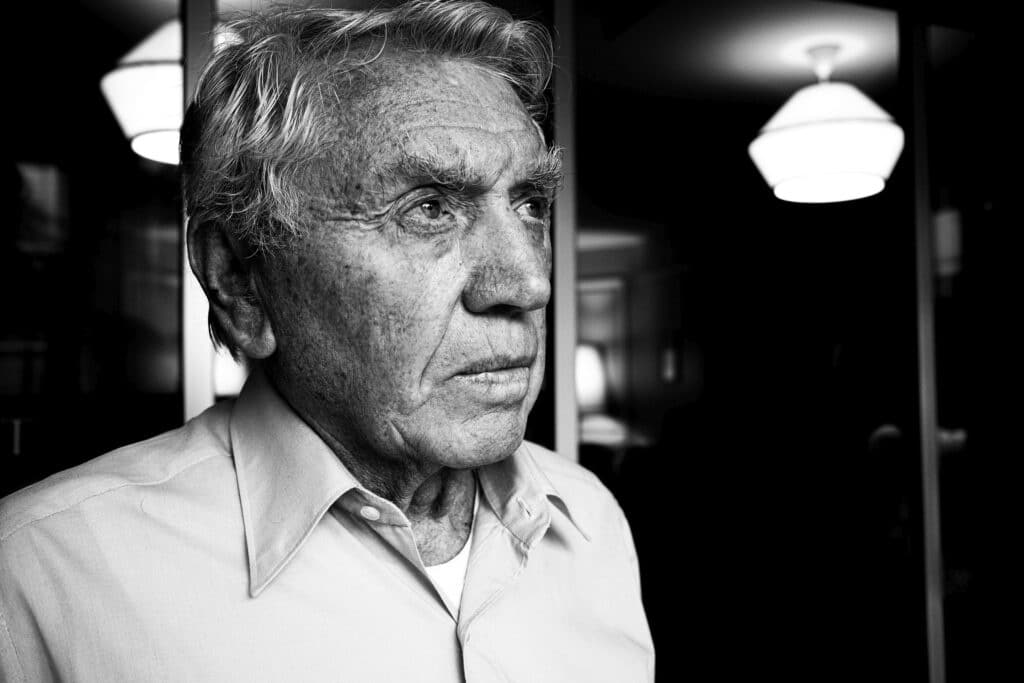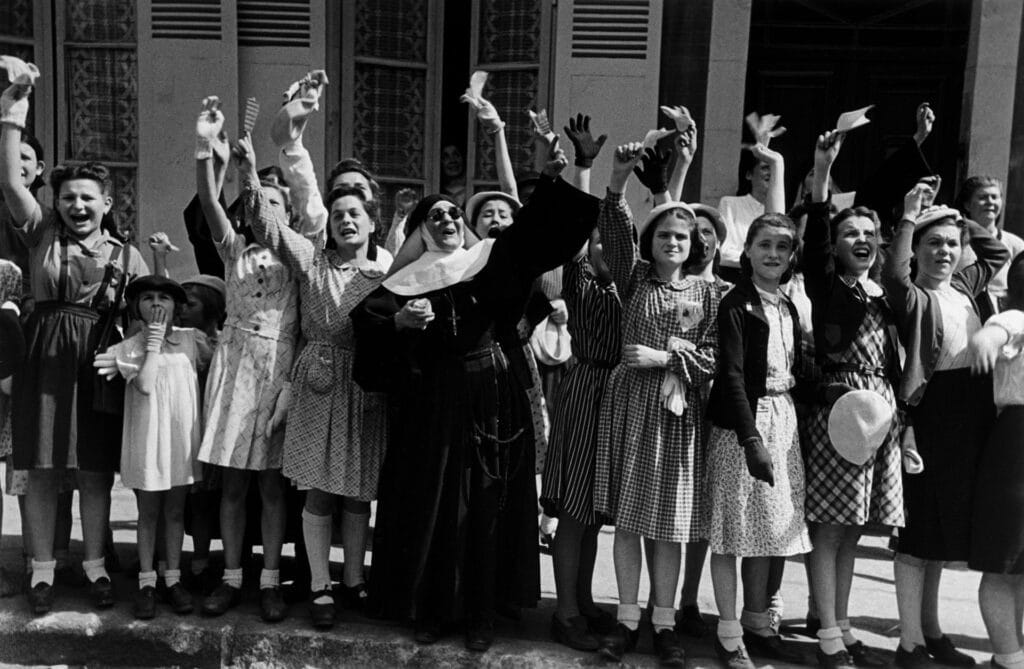“All these people paid the ultimate price; they did it for us”
These words are from Don McCullin, standing upright and solemn, both hands resting on his cane, beneath the tranquil trees at the Bayeux Reporters’ Memorial. McCullin, 88, is the president of the jury for the 30th edition of the Prix Bayeux Calvados-Normandie. This year, the award in the photography category went to the Italian-British Siegfried Modola for his work on the Burmese rebellion. McCullin paid tribute to the journalists who have been killed in the line of duty since 1944. The memorial’s steles bear nearly 3,000 names.
For thirty years, the Bayeux Calvados-Normandy Award has showcased the work of photojournalists from around the world, both past and present. One of the major exhibitions this year, L’autre Débarquement, les correspondants de guerre en Normandie [The Other Landing: War Correspondents in Normandy], pays a fitting tribute to all the photographers, videographers, and journalists who embarked with the Allied troops for D-Day. The 80th anniversary of that watershed moment will be formally commemorated in 2024.

“I entered the water between two corpses”
By sea and by air, 530 war correspondents, equipped with typewriters, cameras, and gramophones, descended onto the beaches of Normandy in separate “pools” to document the unparalleled military operation of June 6, 1944.
This courageous group included the legendary Robert Capa, clutching his 1938 Contax Ikon II and 50mm lens: “I entered the water between two corpses, and the water came up to my neck. The undertow hit me, and the waves were sloshing under my helmet. I held my camera above my head and suddenly realized I was running away.” Despite the loss of the majority of his photographs due to a lab error, Capa managed to capture some timeless images of D-Day. Likewise, Robert Sargent’s iconic photograph Into the Jaws of Death, taken at the precise moment the doors of the American landing craft opened to reveal a hellish barrage of German fire, also stands as a vivid testament to that day.
“People have no idea what war is like, so I really risked my life to capture the horror of it all”
Tony Vaccaro
The late Tony Vaccaro (1922-2022), one of the earliest photographers to be featured in the Bayeux exhibitions, spoke with brutal honesty about his experience: “We felt like we were going someplace to die and never to return.” Yet, like many of his contemporaries, he went on to bear witness to the more than 4,000 ships, 11,000 aircraft, and 150,000 men who, in the early hours of that fateful morning, began to liberate Europe from Nazi rule—albeit at an immense human cost. “People have no idea what war is like,” Vaccaro said. “So I really risked my life to capture the horror of it all.”
Some images of D-Day were lost forever, like those captured by Bob Landry, a Life Magazine photographer who had also witnessed the attack on Pearl Harbor. Many of his photos vanished in the English Channel along with his press bag. His first message to the London office humorously exclaimed, “I’ve lost my shoes!” This message was sent along with the surviving photos—films safeguarded in condoms—including the iconic image of a weary GI reclining in front of the town limit sign for Sainte-Mère l’Église in Normandy.
While the photographers behind these iconic images have become legends, the first photos published in the international press on June 7th remained unattributed due to the pooling of reporters. Nonetheless, the earliest published photos were later credited to Peter Carroll of the Associated Press and Bert Brandt for Acme Pictures.
The struggle of women correspondents
The significant contributions of female war correspondents should not be overlooked either. Though women were prohibited from covering the front lines, their work behind the scenes was invaluable. Lee Miller stands out for her legendary photograph taken in Hitler’s bathtub. Equipped with her 1939 Rolleiflex TLR-RF 111A and a 75mm lens, she vividly captured life in hospital wards for Vogue magazine.
The reluctance to send women to the front was still strong. Correspondent Ruth Cowan bears witness to this. Already hired in North Africa by the Associated Press in 1943, she was greeted by the Algiers bureau chief with these words: “Women war correspondents would be wonderful, if only they weren’t women!” Yet some editors recognized “feminine sensibility” as a valuable perspective, believing it added a “more human dimension” to war reporting.
Perhaps the most striking example is Martha Gellhorn, who was then married to Ernest Hemingway. Both worked for the same newspaper, but only Hemingway was accredited to cover the landings. Undeterred, Gellhorn stowed away on a hospital ship and emerged with an incredible account of the first wounded soldiers repatriated to England. Such women war correspondents, often unjustly sidelined, provided invaluable contributions to the coverage of the war. As Lee Carson noted in her article for the Chicago Times, “the life of a woman war correspondent is full of things no mother has ever explained to her daughter… Everyday life is death, dirt, and fatigue. Everything else becomes a dream.”

Censorship
Another critical aspect of this monumental military operation was image control. An extensive censorship system was in place to vet the thousands of negatives documenting Operation Overlord. “You’ll have the authority to report on anything that’s permissible, in line with military security. I have no doubts about the outcome, but it won’t be a bed of roses,” General Eisenhower proclaimed on the eve of June 6.
“The journalistic coverage by war correspondents during World War II was, in general, not critical but rather aligned with the war effort”
Aimé-Jules Bizimana
London-based offices were charged with meticulously screening each photograph for sensitive information. Various elements in the photos, such as ammunition depots, strategic maps, and location markers, were scratched out to prevent disclosure. Out of the hundreds of thousands of photos reviewed, only 400 were barred from publication. “Constrained both by strict censorship and self-censorship, the journalistic coverage by war correspondents during World War II was, in general, not critical but rather aligned with the war effort,” observes Canadian historian Aimé-Jules Bizimana.
“What is shown here in Bayeux is not art”
Many of these war correspondents paid with their lives, embodying an ideal captured by the words of Irish-American correspondent Cornelius Ryan, who followed General Patton’s 3rd Army: “Journalism is the world’s noblest profession. Never forget that.” Bayeux serves as a reminder that the fight for information continues today, as seen in the coverage of the war in Ukraine, the most significant military conflict in Europe since World War II; in Syria; and in overlooked conflicts like the one in the Democratic Republic of Congo.
Central to it all is the testimony of Don McCullin, whose iconic photos are showcased in the streets of Bayeux. Seated at the bar at the Hôtel du Lion d’Or—where Ernest Hemingway and Robert Capa once stayed after the landing—this luminary of war photography lays out a stark truth: “What you see here in Bayeux, it’s not art. We’re talking photojournalism, war, and tragedy. A lot of photographers lost their lives doing their job. Is it worth getting killed over a shot? The clear answer is no. So, why do we go? What drives us? Being caught up in the life of a photojournalist, it’s like a drug; it’s hard to quit.”

Prix Bayeux Calvados-Normandie exhibitions, Bayeux, until November 12.



